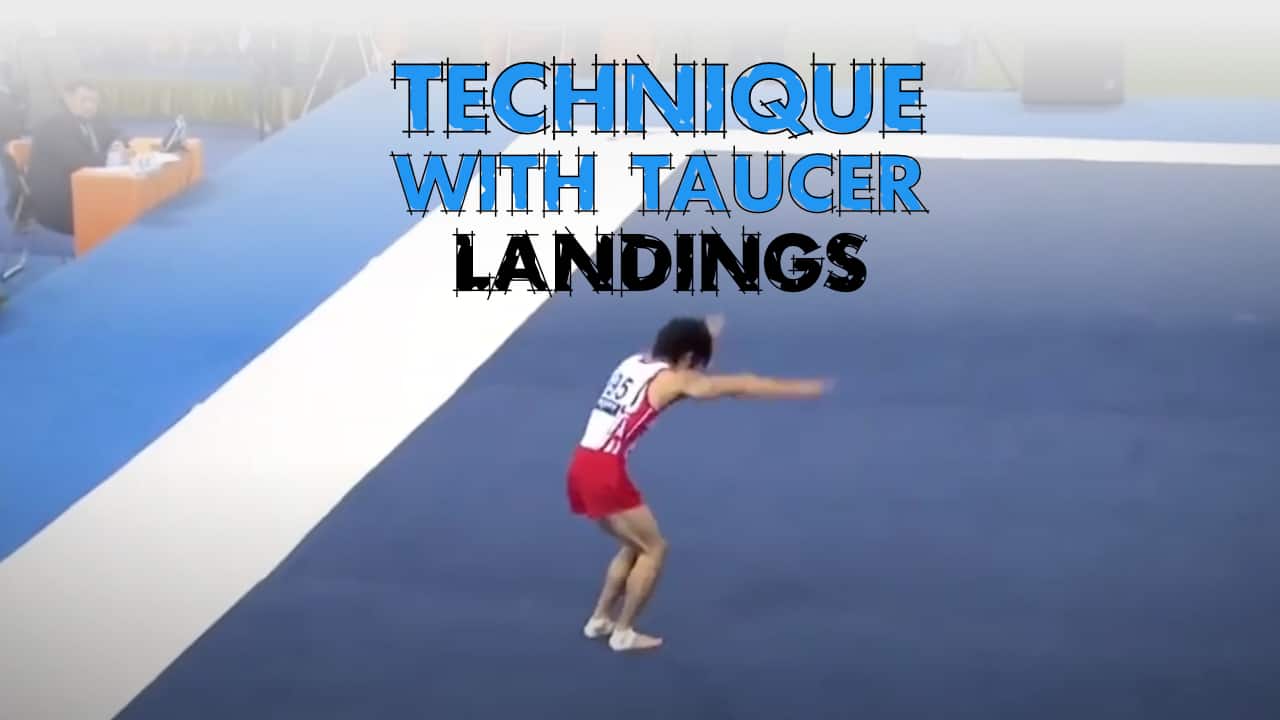Kohei Uchimura at 2014 World Championships
“How do you *really* define a stuck landing”? Does it mean no steps or is there more to it?”
-PreciousJ
The short answer
No movement of the feet, back straight, knees bent, no excessive movement for balance, and a complete stop. For maximum score, the upper torso should be upright and the legs should be together; for maximum safety, the upper torso should be angled forward, and the legs should be about shoulder width apart. Yes, there is a contradiction between safety and judging criteria. But to delve properly into that, we’ll have to look at…
The long answer
A routine should end in a way that is controlled, safe, and beautiful. These are what define a proper stick. The specifics of how to accomplish this are surprisingly nuanced, and there are multiple sometimes-contradictory answers. So we’ll start with the abstract perspective, then work our way through the biomechanical perspective and the judging perspective.
The athlete should reach a complete and controlled stop. This is accomplished by positioning the athlete’s center of mass over their base of support while bringing the total momentum down to zero. In simpler terms, they should be on their feet and they should stop moving. There are three different kinds of momentum the athlete must absorb: vertical, horizontal, and rotational. Different situations will have different proportions of each type of momentum, so the exact angles and positions will vary slightly depending on context.
In order to safely come to a complete stop, they must absorb a significant amount of momentum. While the entire body must work for this, the most important components are the ankles, knees, hips, and lower back. The knees, ankles and hips bend in order to absorb momentum from the dismount; the lower back works to stabilize the upper body and establish a balanced posture.
When this is well executed, it is an exclamation point at the end of a routine. A cathartic release, a dramatic conclusion. A demonstration of mastery and precision.
The forces that a high-level gymnast must handle on big skills are immense, and poor landing technique can increase the risk of injury. In order to minimize this risk, the athlete should bend the knees and hips in roughly equal amounts, meaning the upper-torso and the shins should be roughly parallel. The feet should be shoulder width apart, faced forward or turned slightly out. As the knees bend, they should stay in line with the direction the toes are facing. Arms should be extended forward, slightly below horizontal. The hips should push slightly back with the pelvis tilted forward, keeping the slight natural arch of the lower-back. This landing position presents the safest and most efficient way of dissipating the impact.
The ideal landing for scoring purposes is described in the FIG* code of points, as well as the USAG MAG and WAG** codes of points. The athlete should show a controlled stop on the feet without falls, steps, excessive arm movements or balance checks, and with correct position and posture. Correct position and posture generally mean the upper back is flat, the arms are extended forward, the knees are bent, and the legs are together. The USAG WAG program also emphasizes having the upper body vertical with the hips tucked under to keep the lower back flat.
There are contradictions between the highest-scoring landing and the safest landing. In fact, the safest and most efficient landing would likely incur around .2 in deductions for leg separation and upper-body posture.
Judging criteria should be rewritten to reflect best safety practices so that athletes and coaches will not be put in the position of having to choose between safety and for scores. For more on this, I recommend Dave Tilley’s article on the subject: https://shiftmovementscience.com/why-gymnasts-must-change-how-they-land/
*The International Gymnastics Federation, which sets the elite rules.
**Men’s Artistic Gymnastics and Women’s Artistic Gymnastics, respectively
Image screen captured from https://youtu.be/dZMHfNTZrr0?t=44

4.5
5